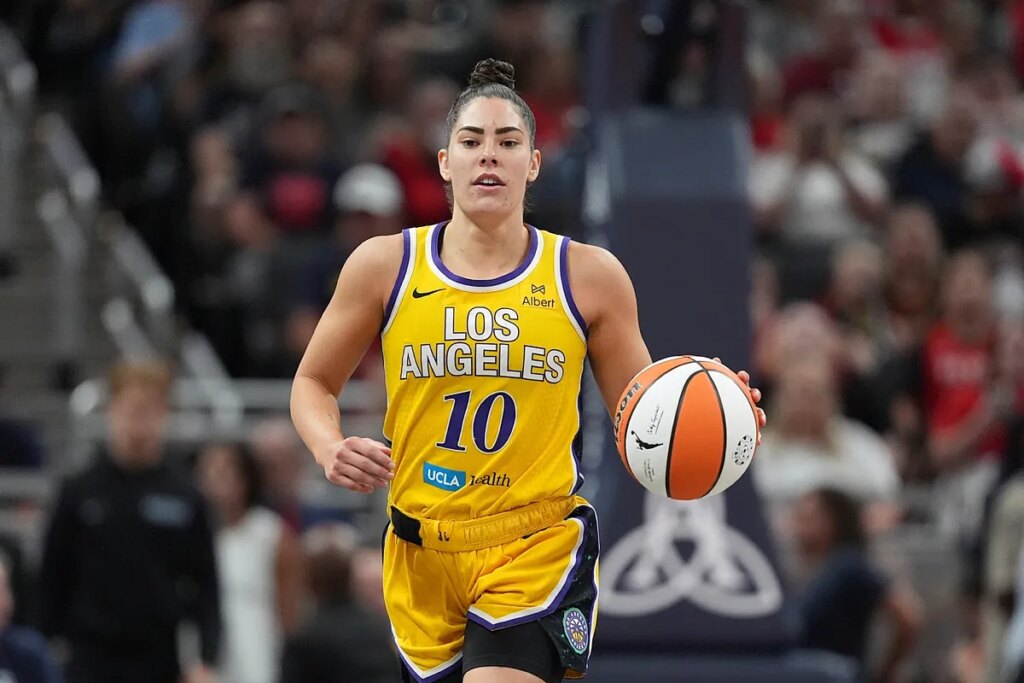Kelsey Plum has a vision for the WNBA All-Star Game – one that trades light-hearted theatrics for high-stakes intensity in a bid to level up one of women’s basketball’s biggest annual events.
The new perspective comes following the 2025 edition of the contest, which marketed itself as an exhibition in Indianapolis and drew mixed reactions, despite strong viewership.
So the Los Angeles Sparks guard suggested a game-changing solution: bring in Netflix, and bring real money to the table as Plum floated the idea during an appearance on the All The Smoke podcast.
“I was saying… uh, you know the game [should be] sponsored by Netflix,” Plum said, tongue-in-cheek. “Million dollar pot.
“Actually, I went small with the million… maybe you do a $5 million pot.”
Her comments come at a time when the All-Star Game and the league are undergoing increased scrutiny and visibility as it entera a golden era of interest, pulling in wider fans to watch from the NBA and Europe.
But whilst the game featured marquee names, social messaging, and viral buzz, it lacked a competitive edge and the WNBA veteran, Candace Parker, didn’t hold back in her critique of poor quality.
“Y’all cannot come out there with those shirts and then do that in the All-Star Game,” Parker said, referring to the warm-up shirts players wore before tipoff, emblazoned with a now-familiar demand slogan of, Pay Us What You Owe Us.
It was a pointed reference to ongoing calls for better compensation and upcoming collective bargaining negotiations. But the symbolic protest clashed with the game that followed.
The event itself was an unbalanced, defense-light contest where Team Collier defeated Team Clark 151-131, and although Caitlin herself didn’t play and likely would have made it a closer affair, the outcome made a mockery of the salary demand movement.
WNBA All-Star Game: Should it push for competitiveness or remain relaxed?
Plum’s proposal draws on a simple principle: financial incentives drive performance, therefore players are more likely to compete at an intense level and risk injuries.
A clear example is the WNBA Commissioner’s Cup, the league’s midseason tournament that offers $500,000 in cash rewards and cryptocurrency bonuses. The result? A playoff-style atmosphere rare in mid-July.
Courtney Williams captured the sentiment plainly by stating, “I was playing for the money.”
Contrast that with the All-Star Game in which Napheesa Collier was named MVP after an outstanding 36-point performance on 13-of-16 shooting, but the reward? A bonus of just $5150.
Every participating player received $2575-hardly enough to motivate a shift in effort or risk injury during an already compacted schedule; especially as the WNBA Playoffs begin in September. Is that pitiful sum worth an ACL tear or Achilles injury?
However, some, like Aliyah Boston, argue that the All-Star Game should be a celebratory event with a relaxed vibe.
“An All-Star Game, where we have another game in two days,” Boston said to media. “I think it’s OK to just go out there and hoop and have some fun.”
Read the full article here

